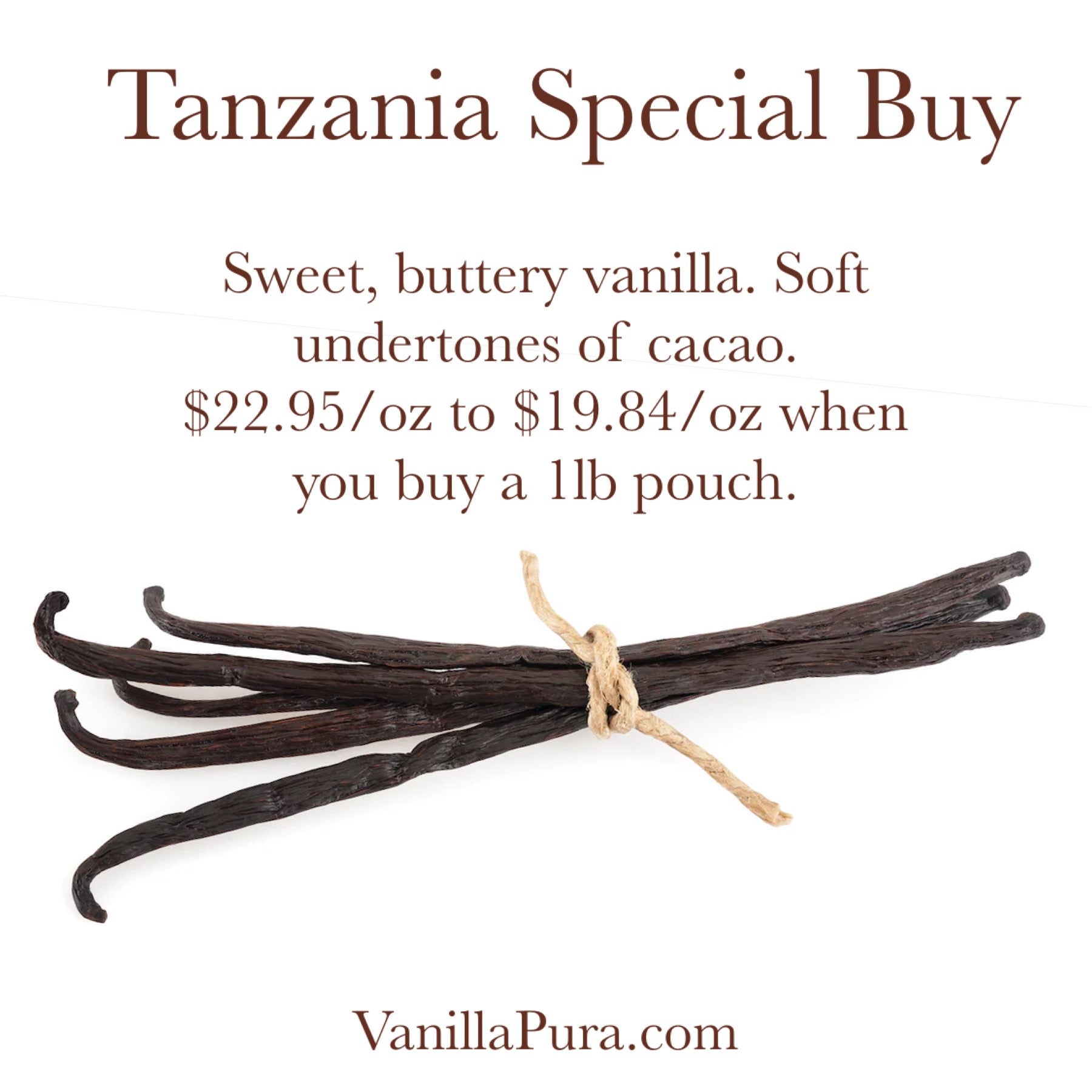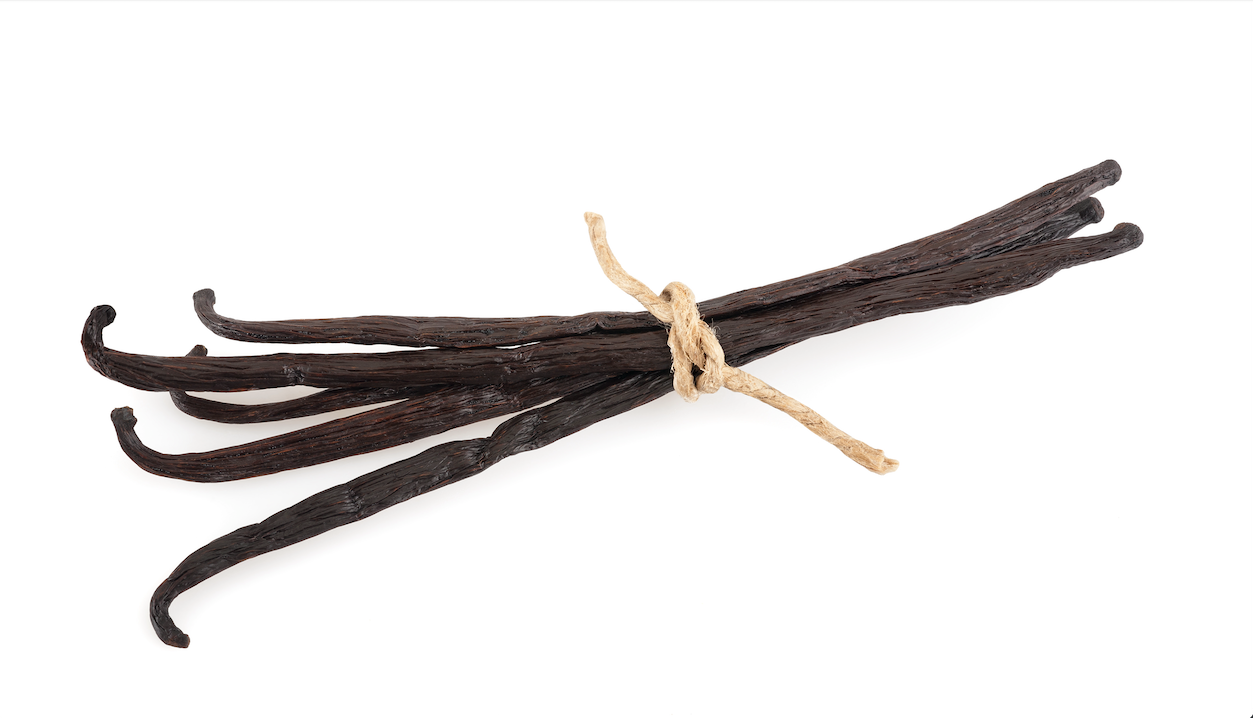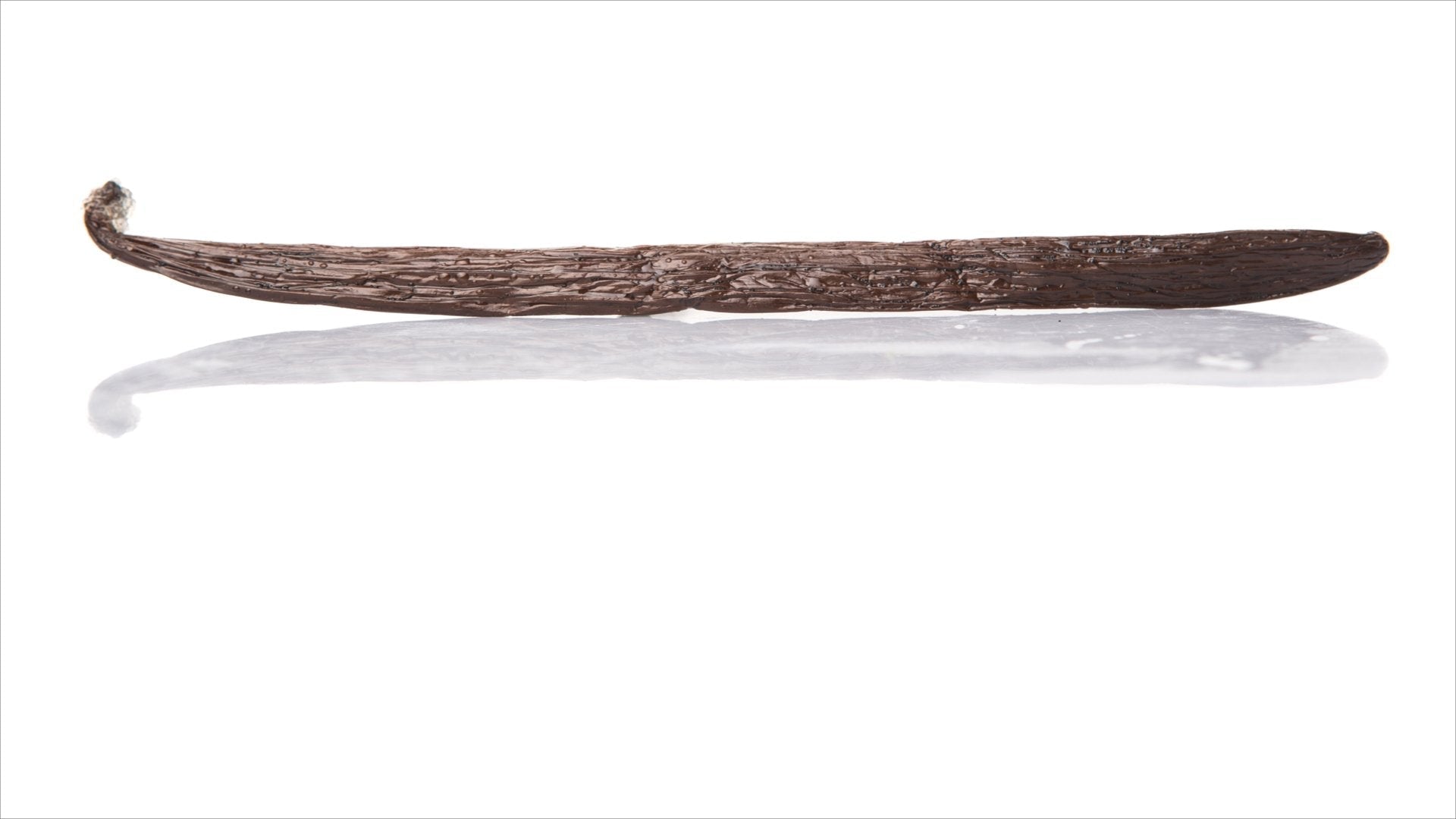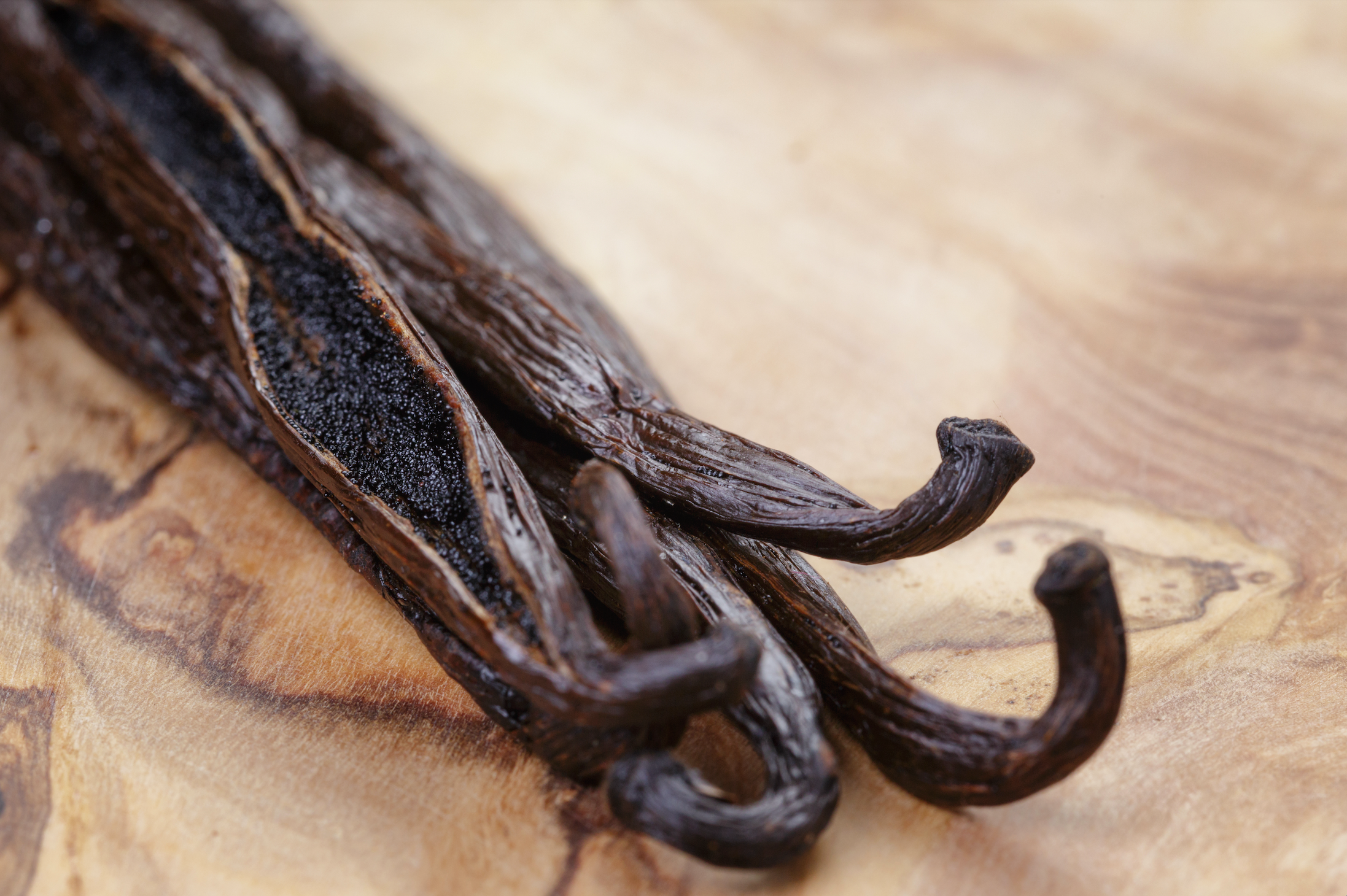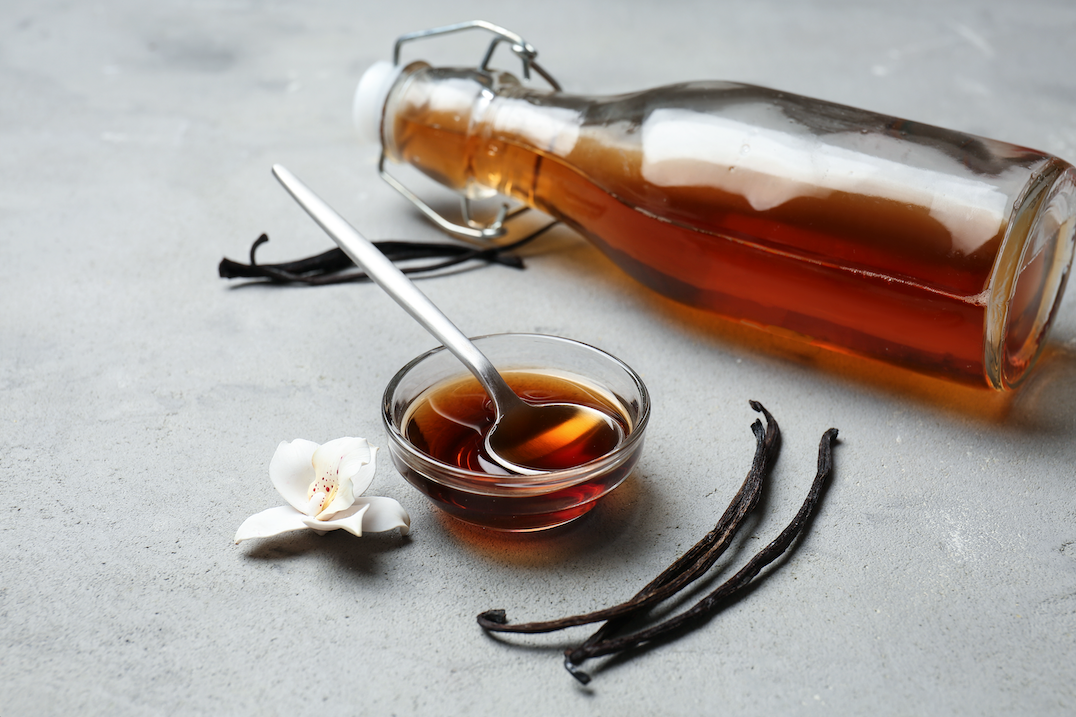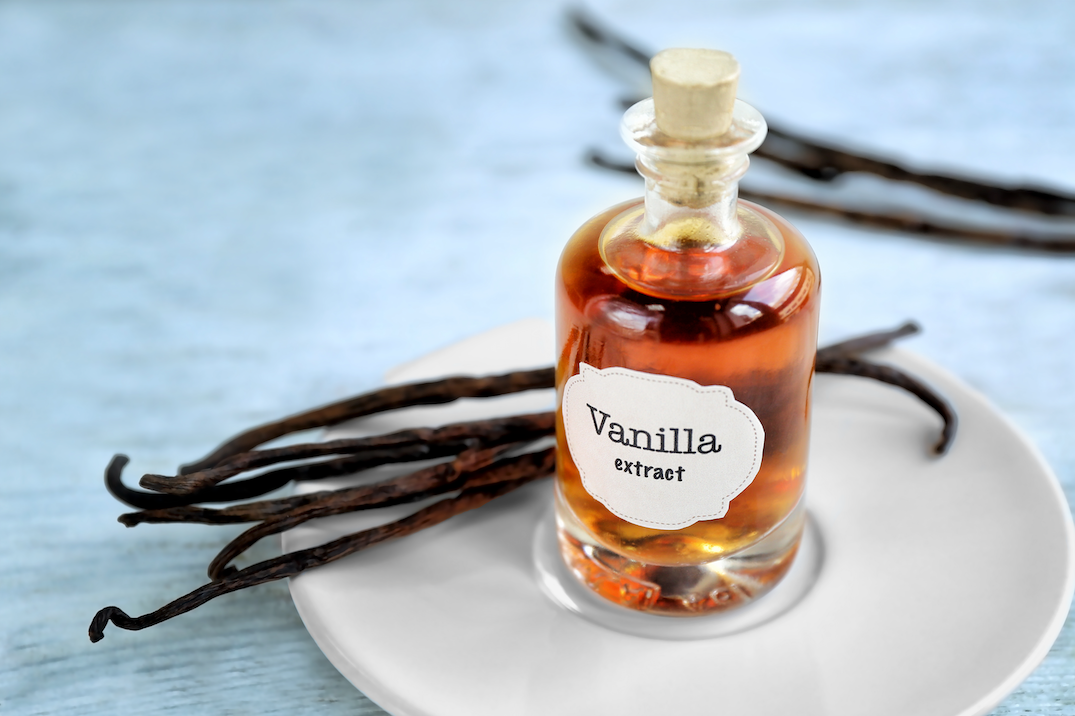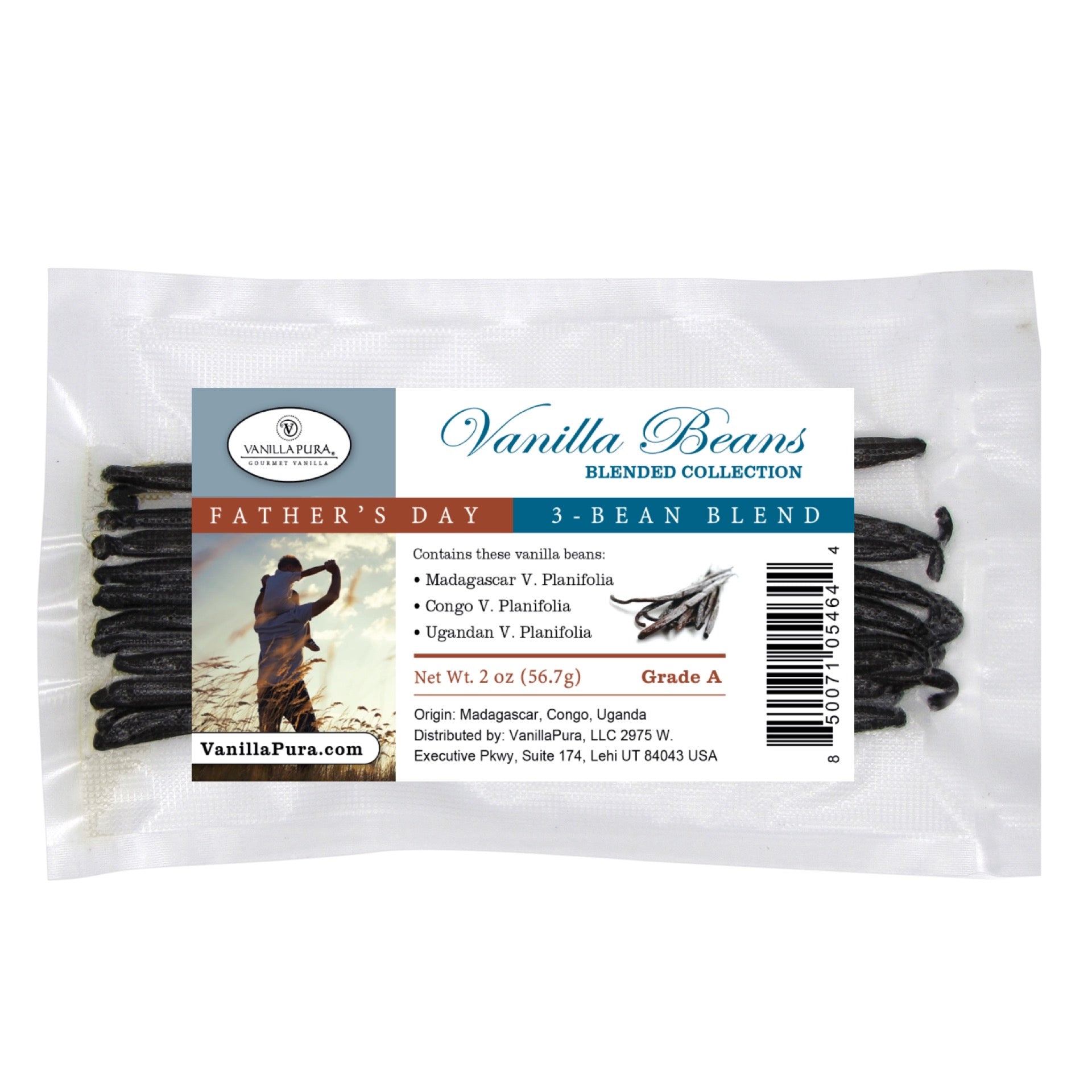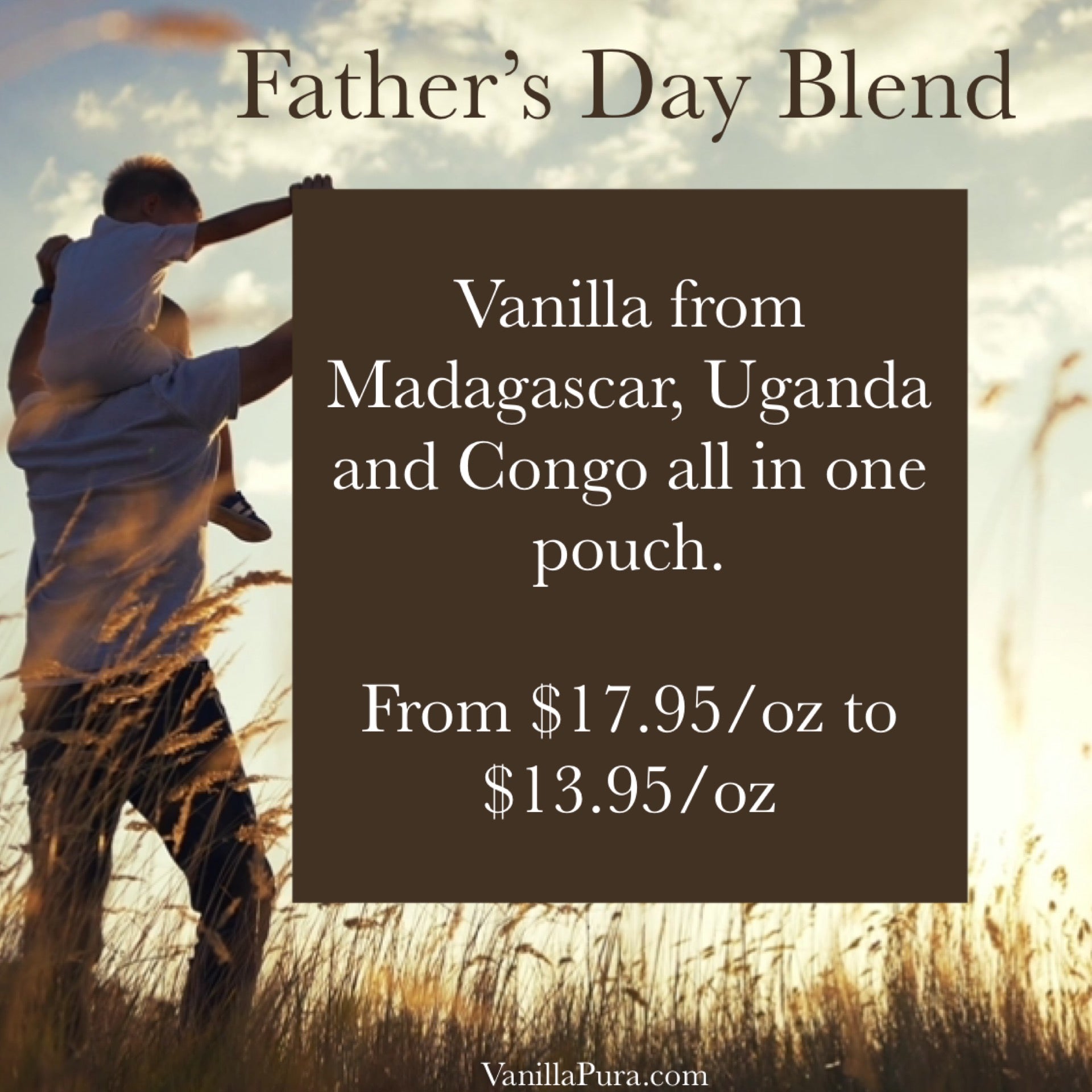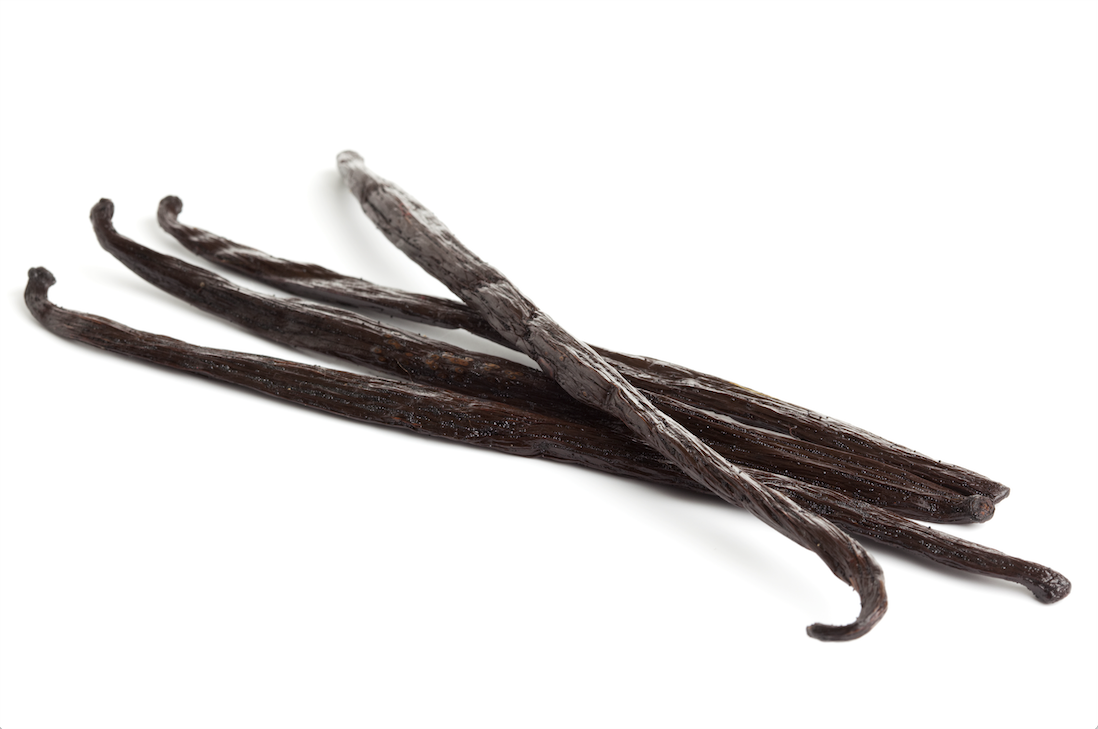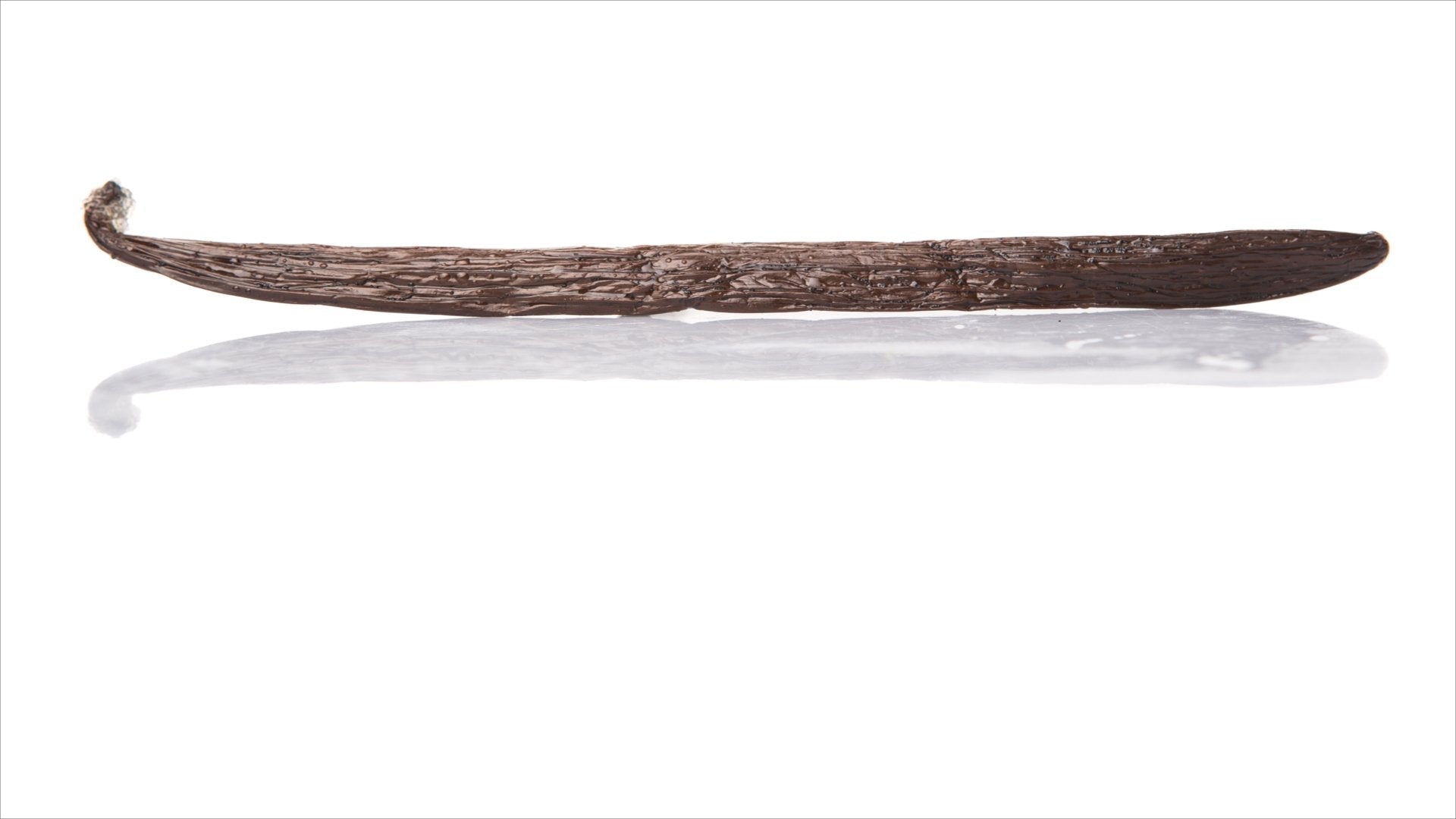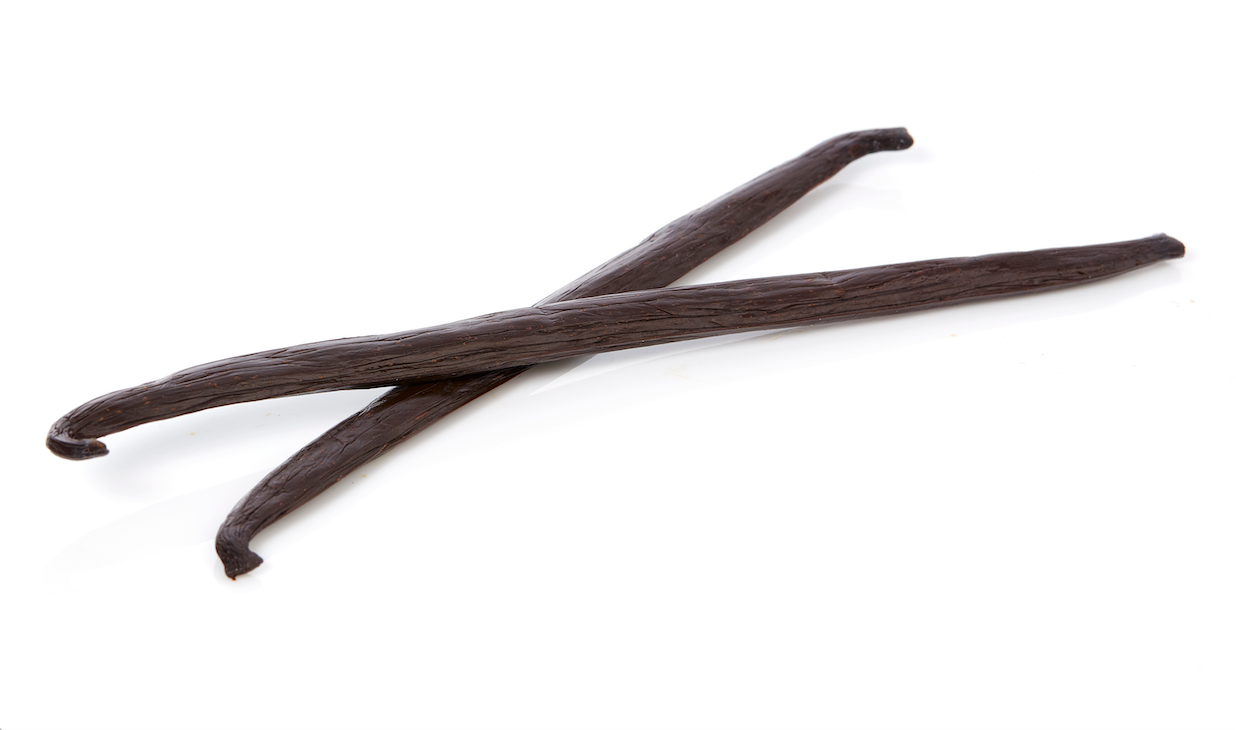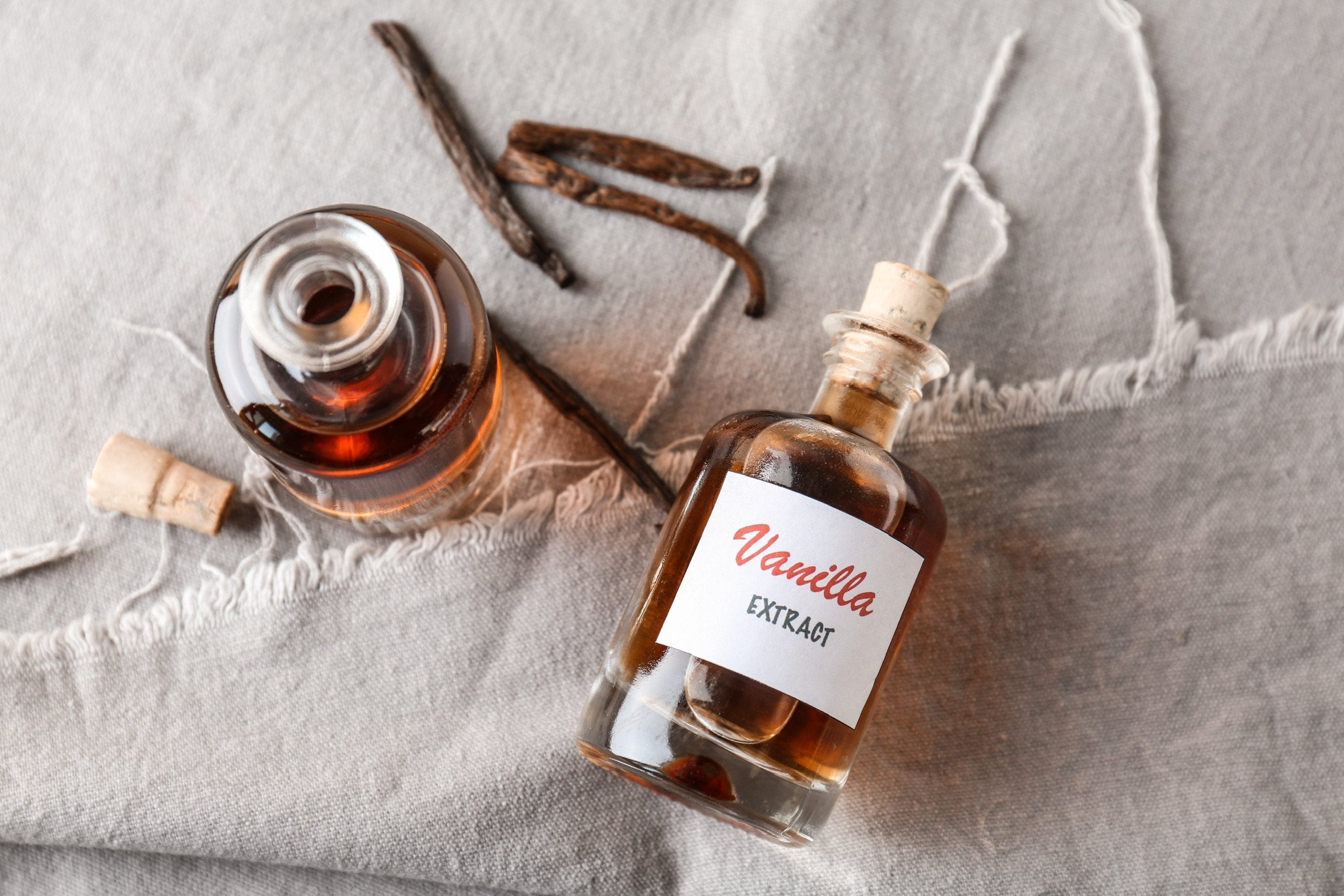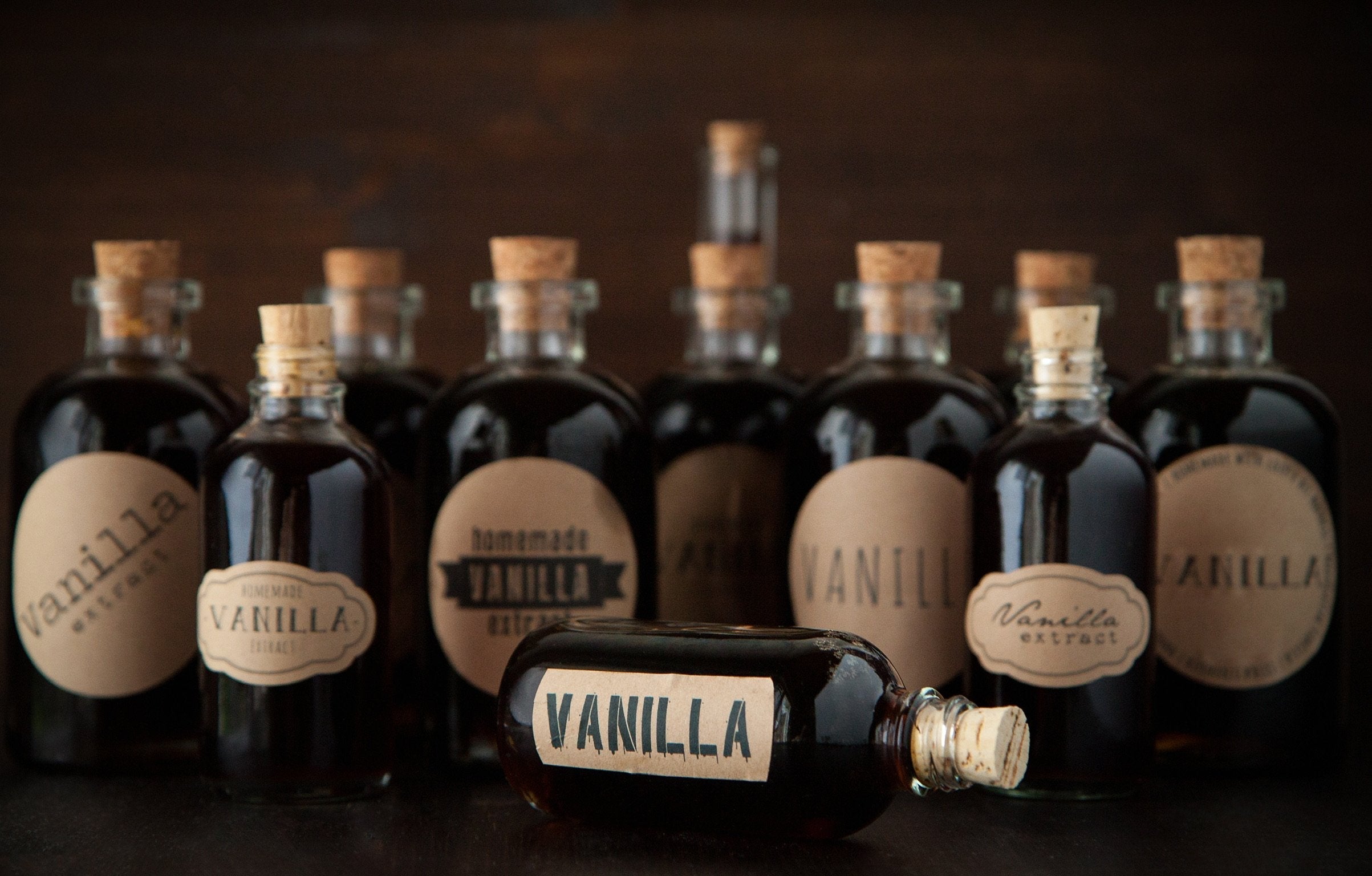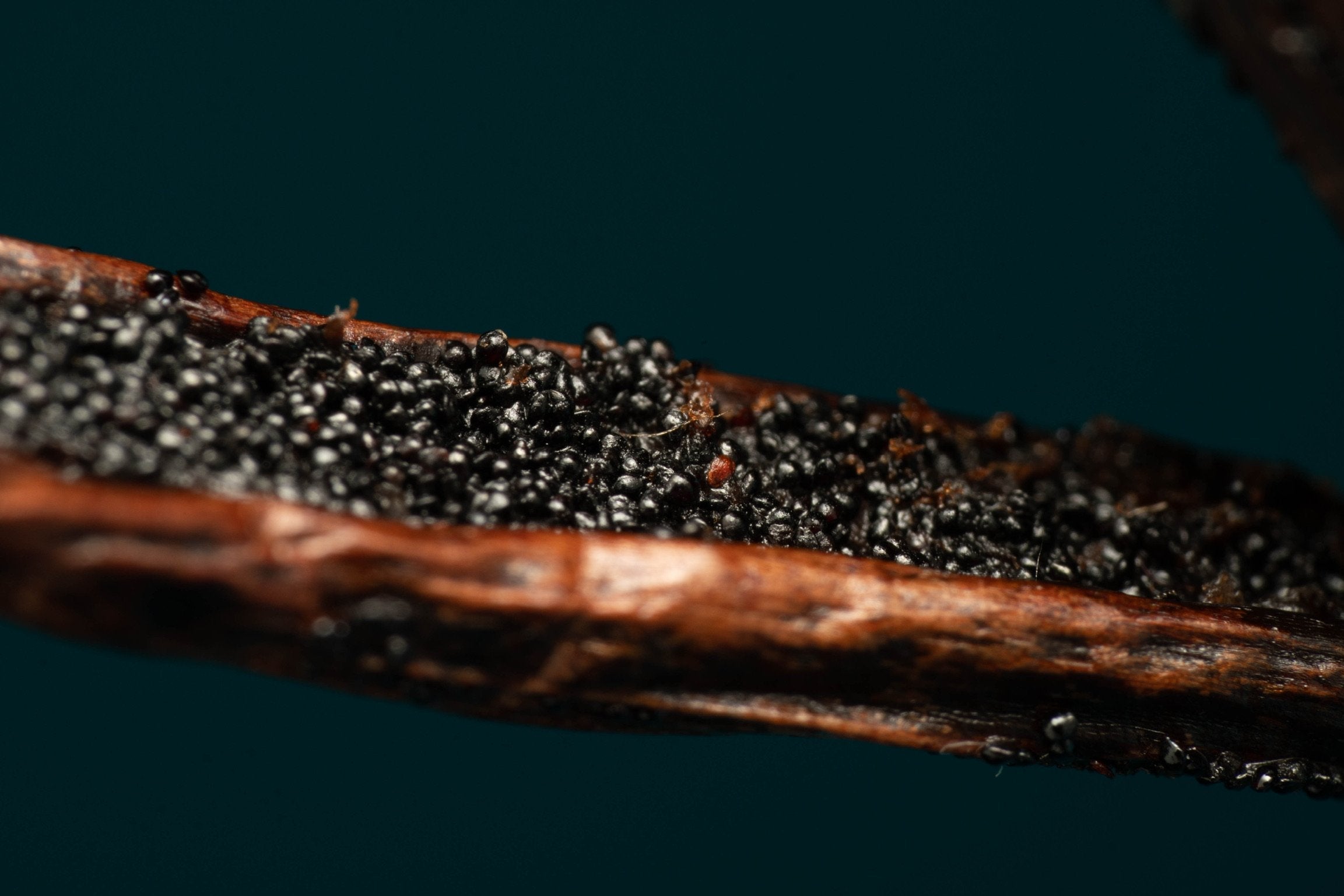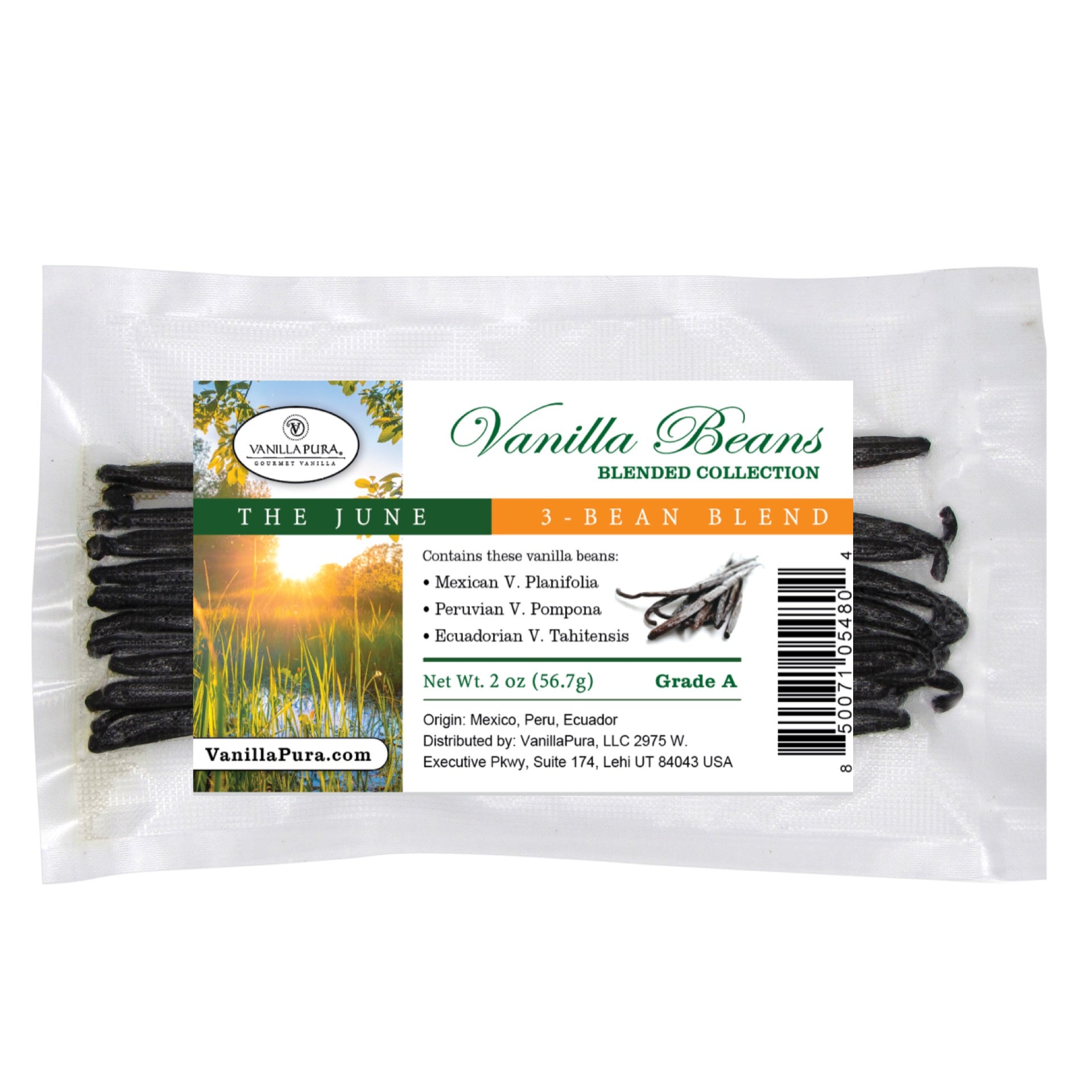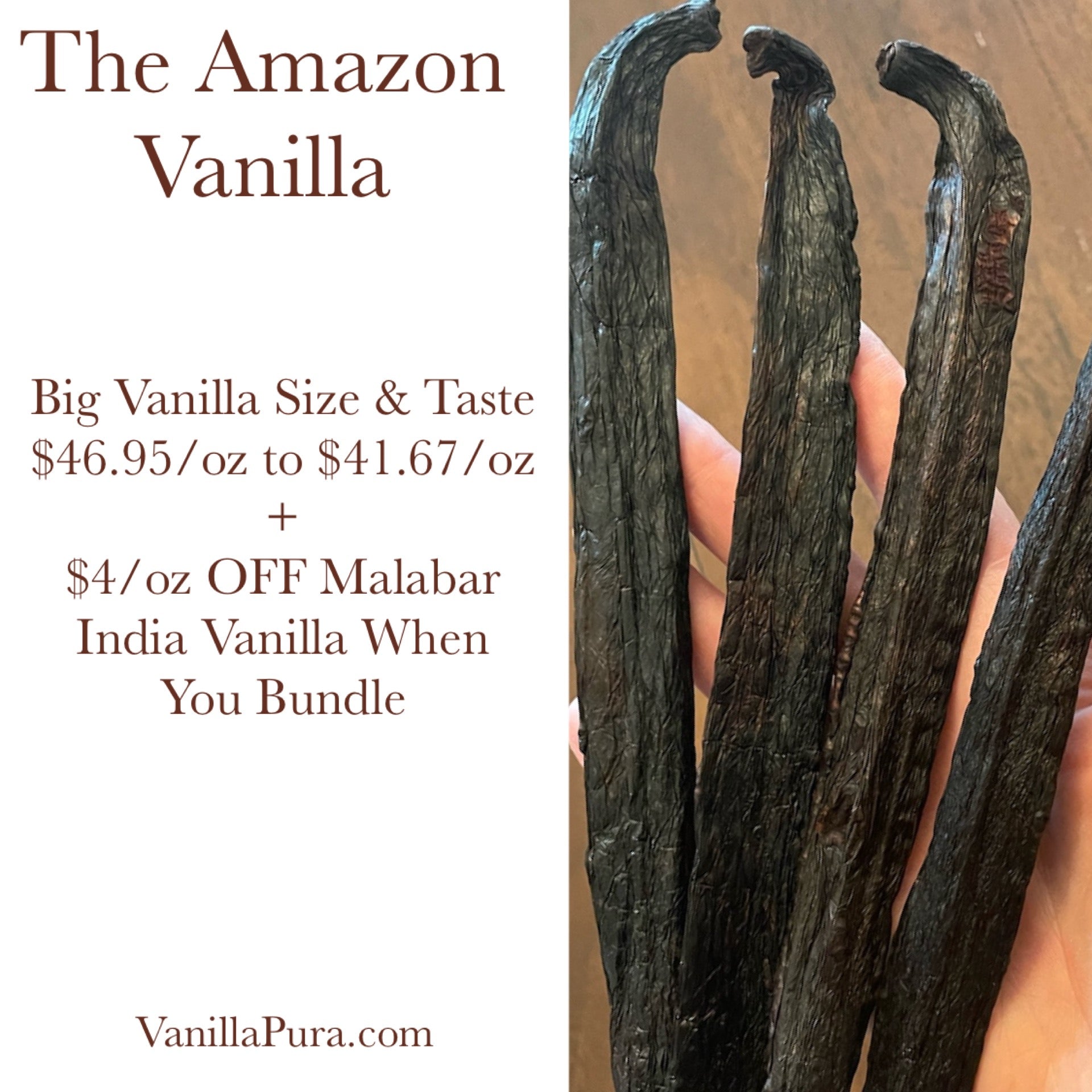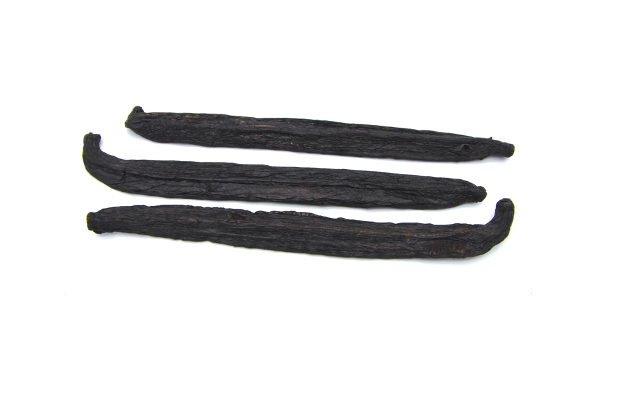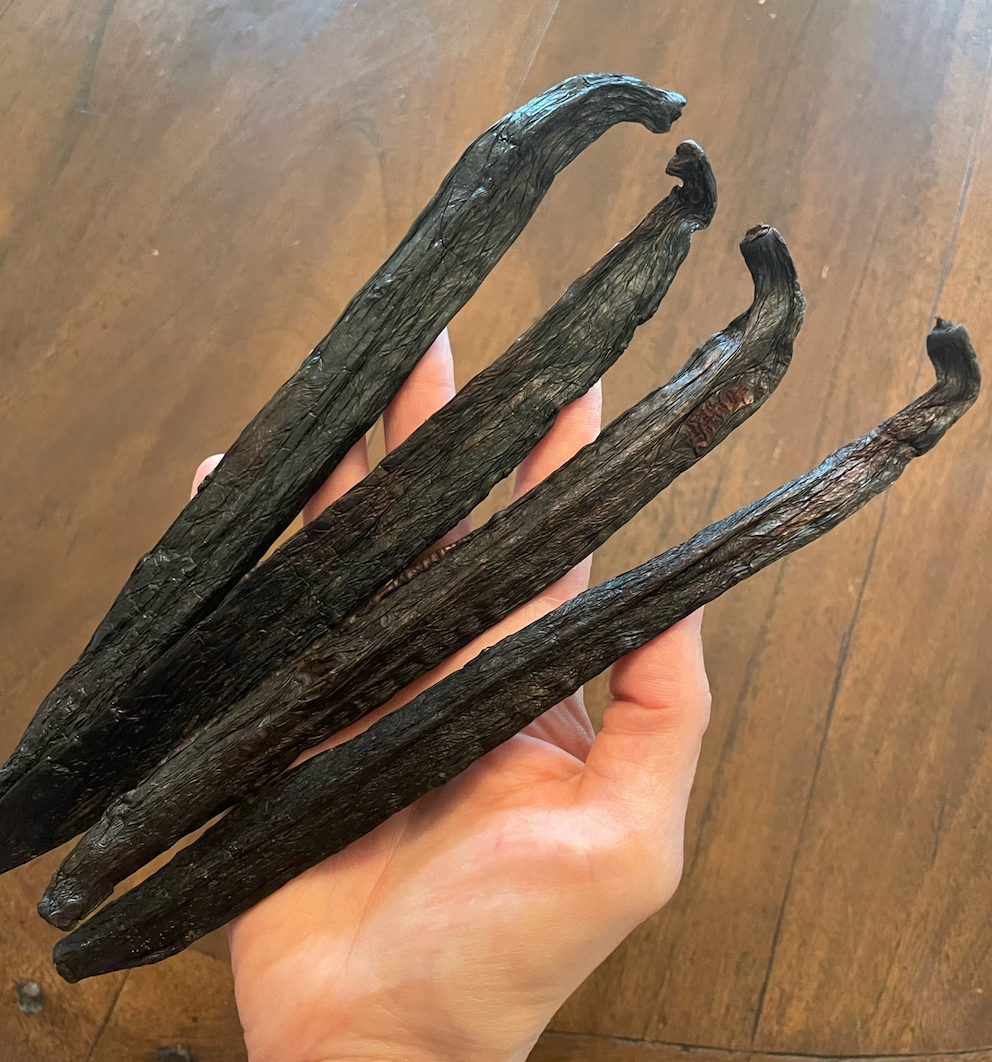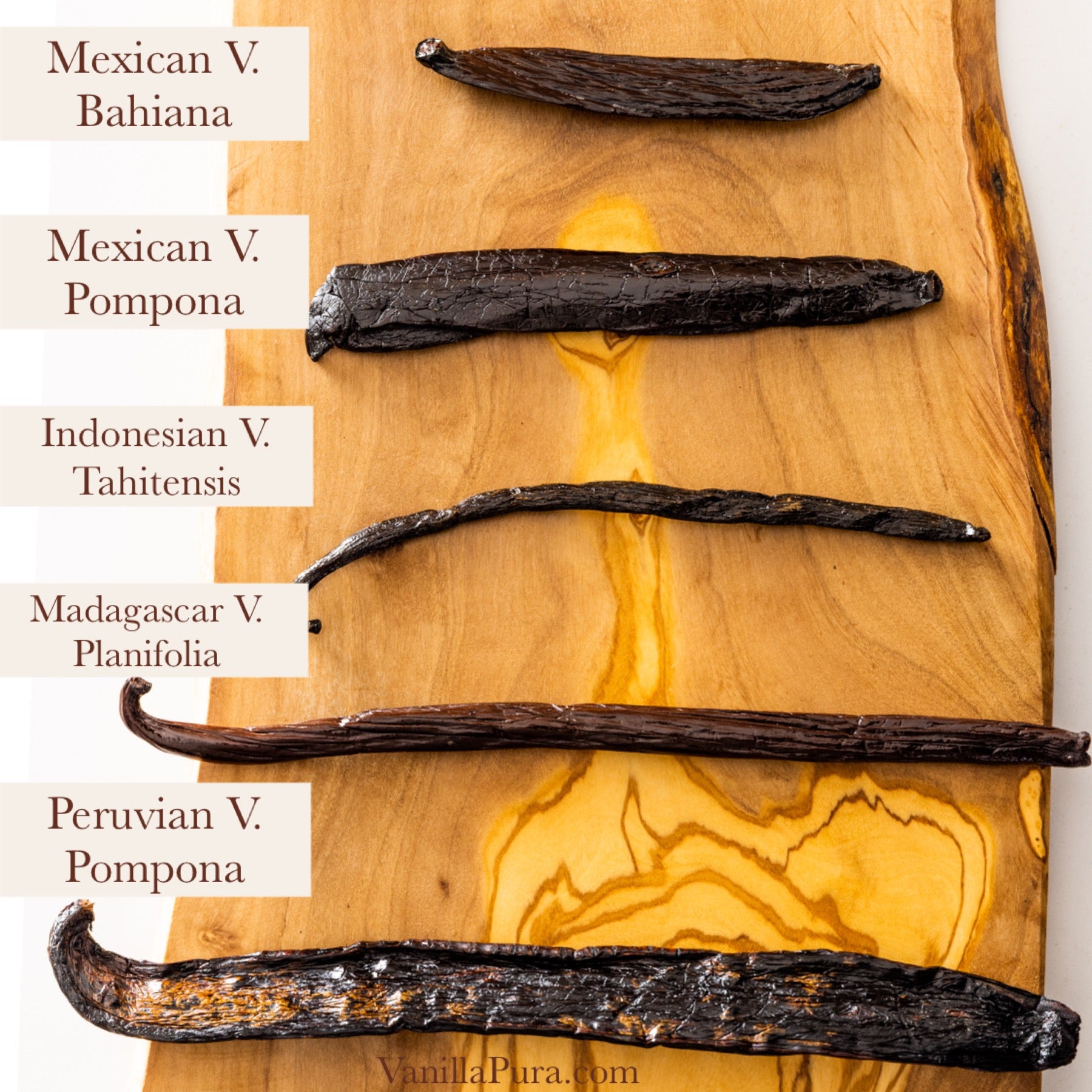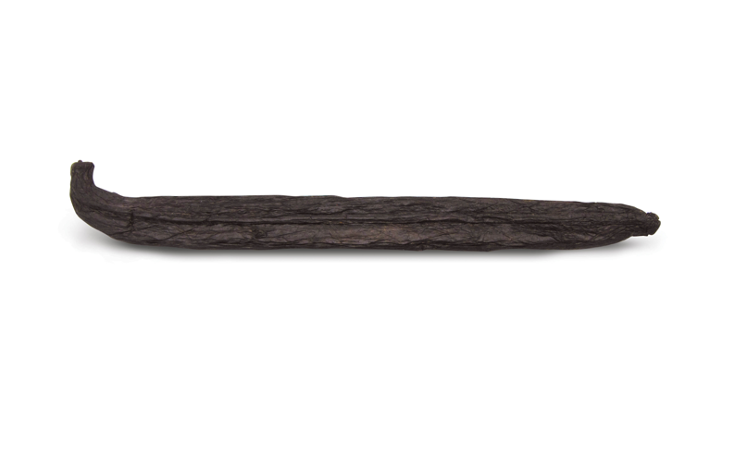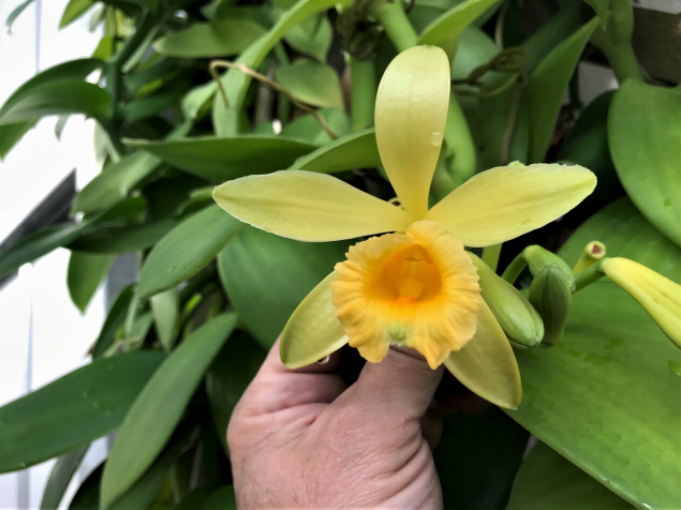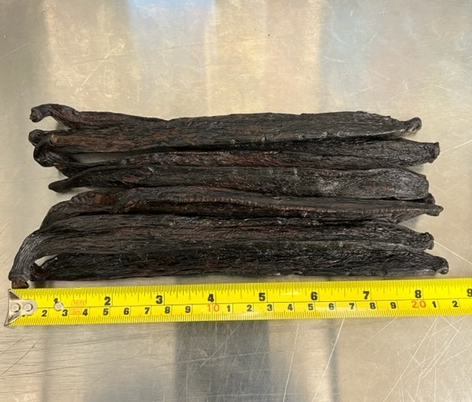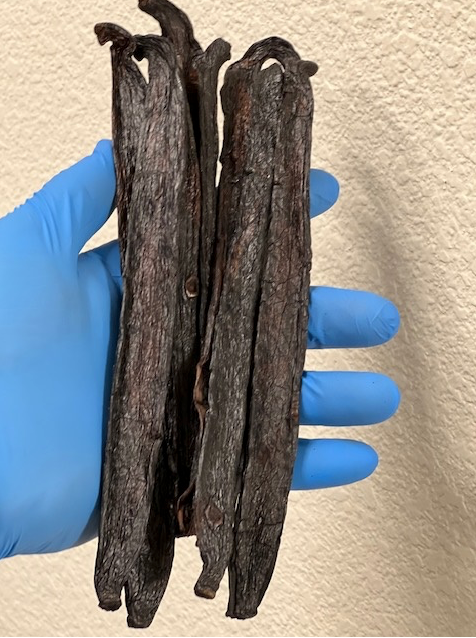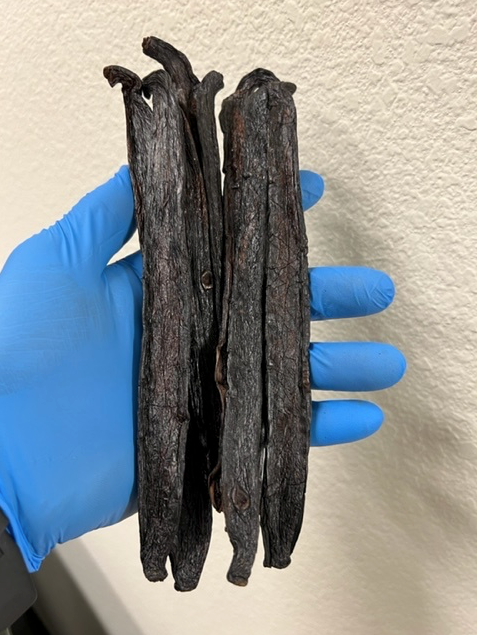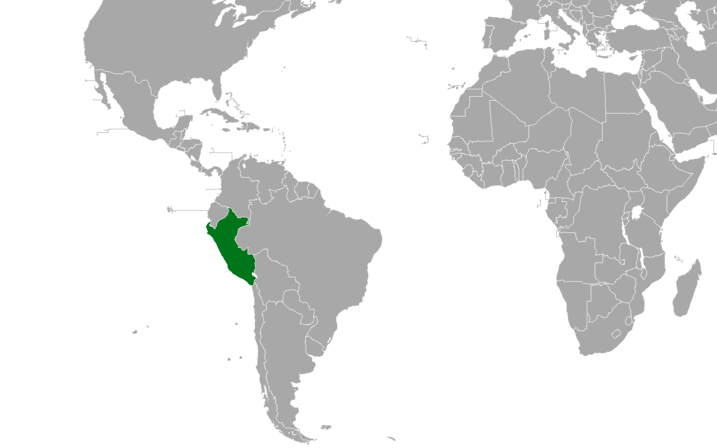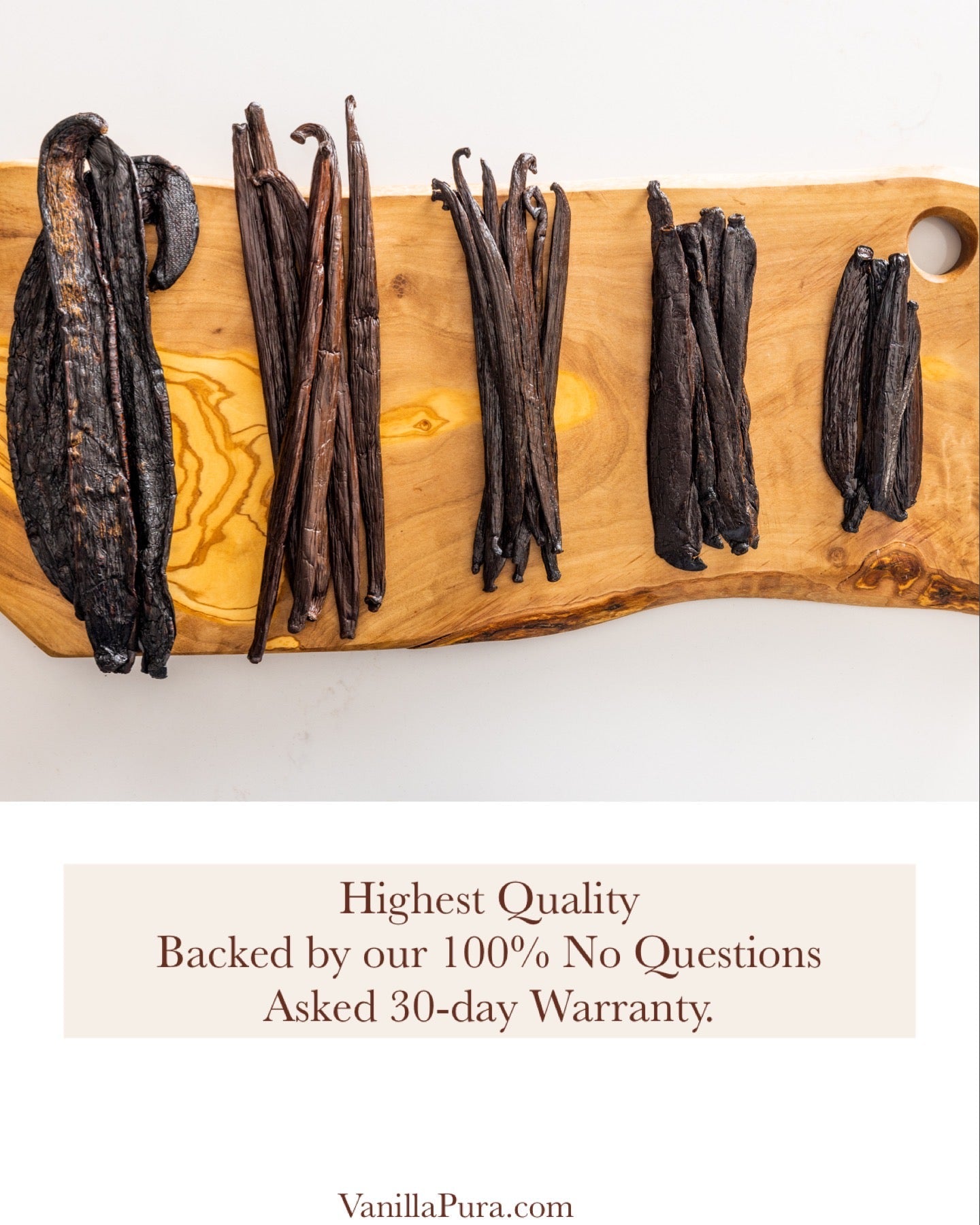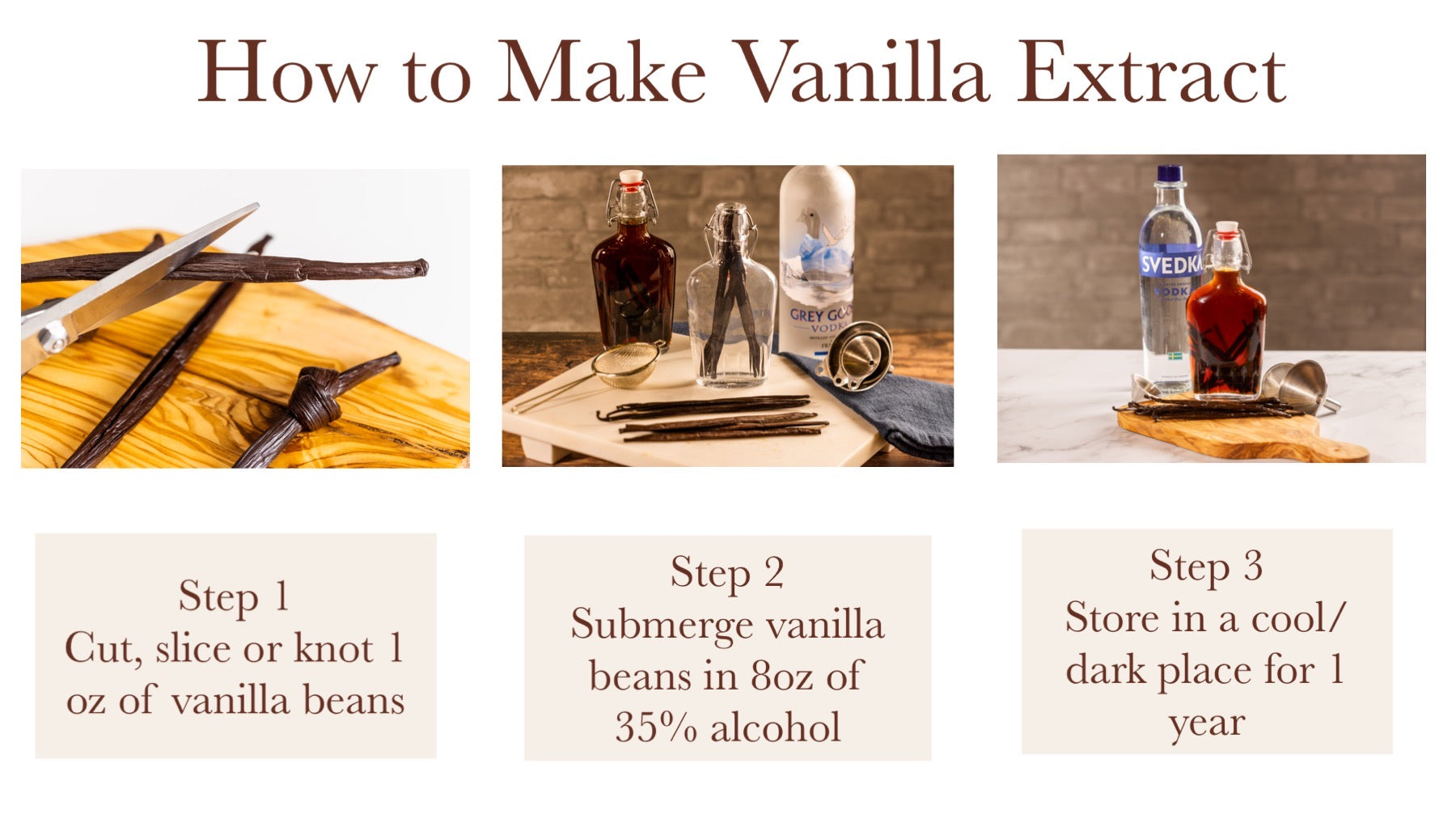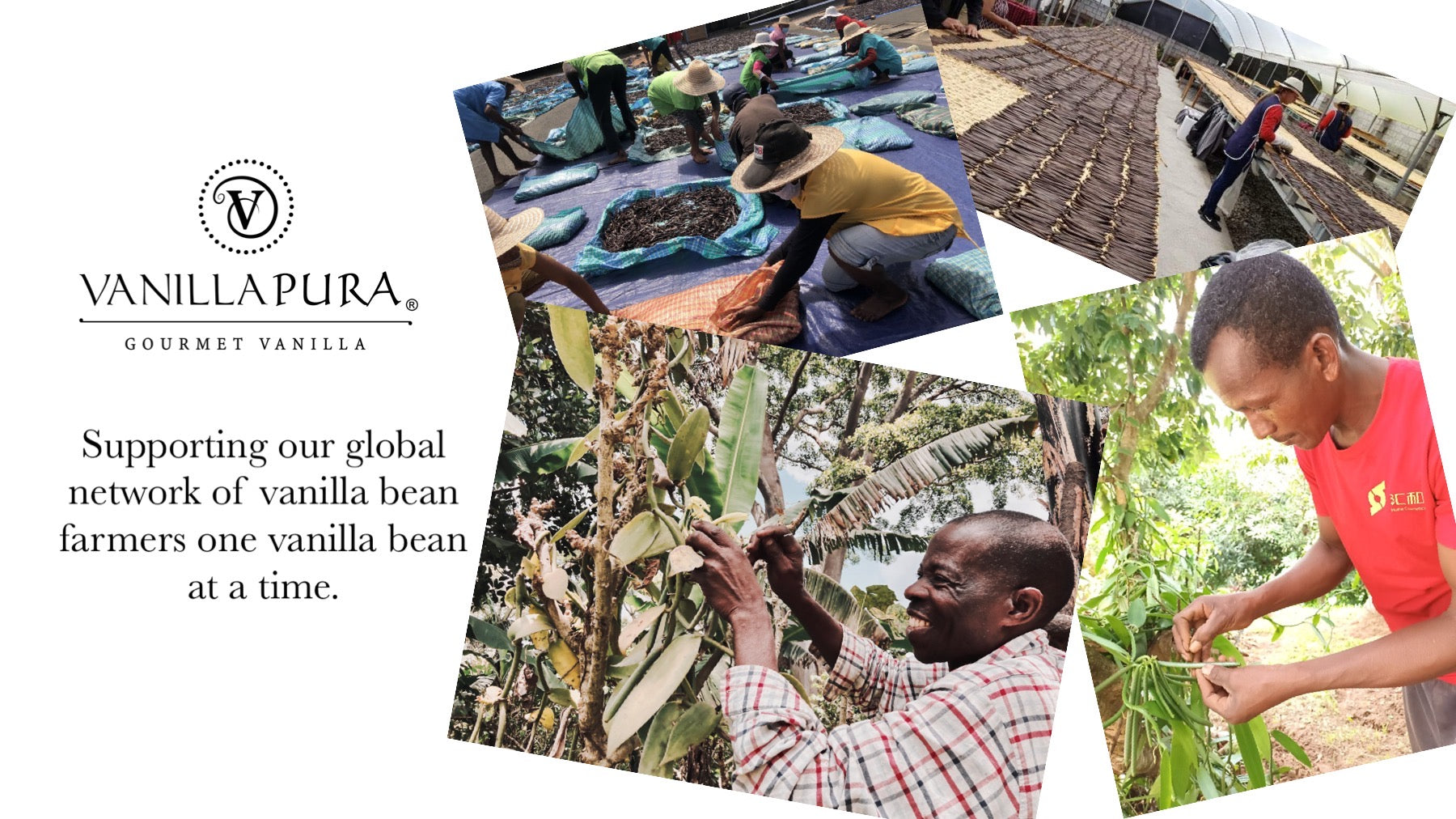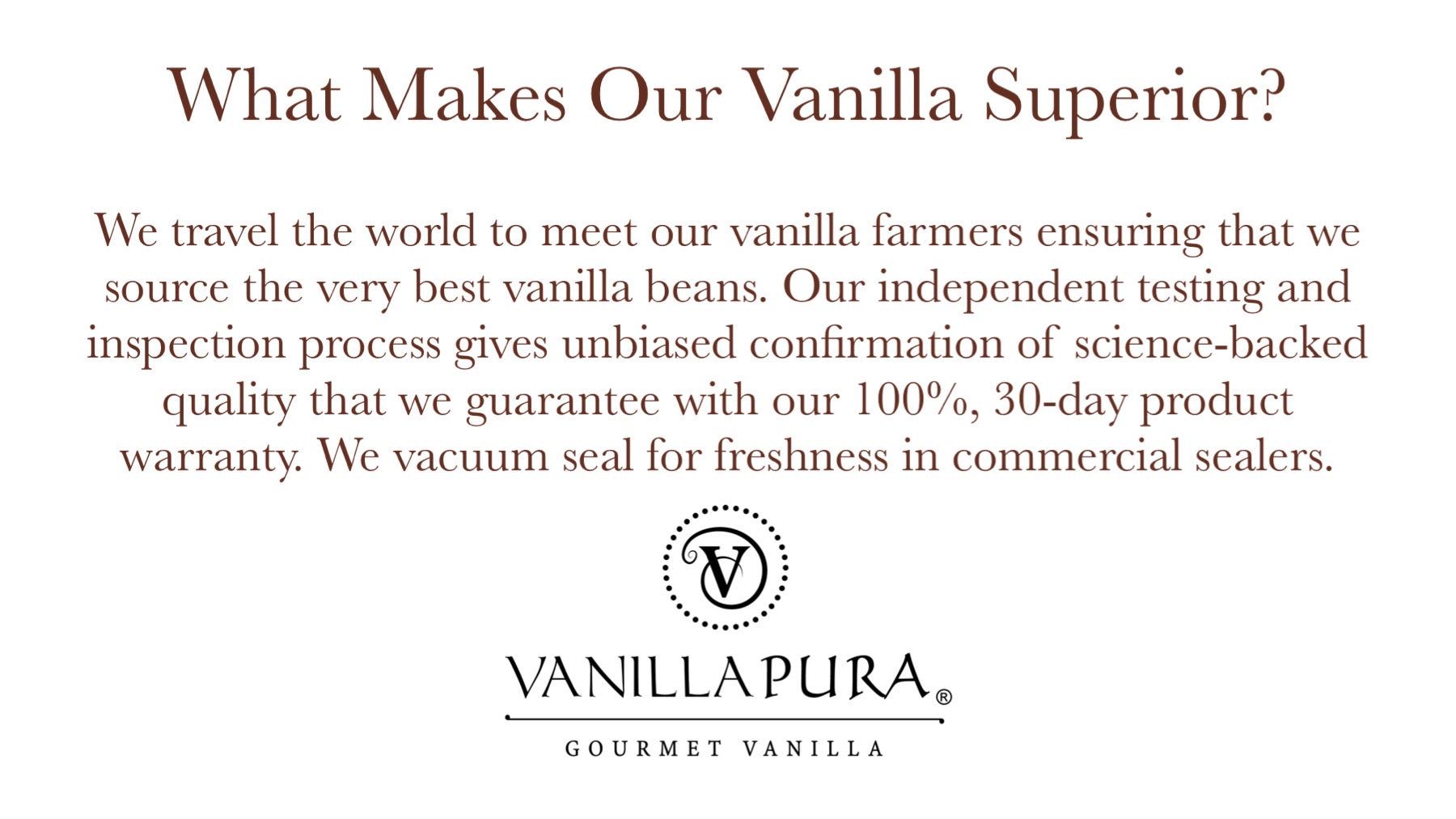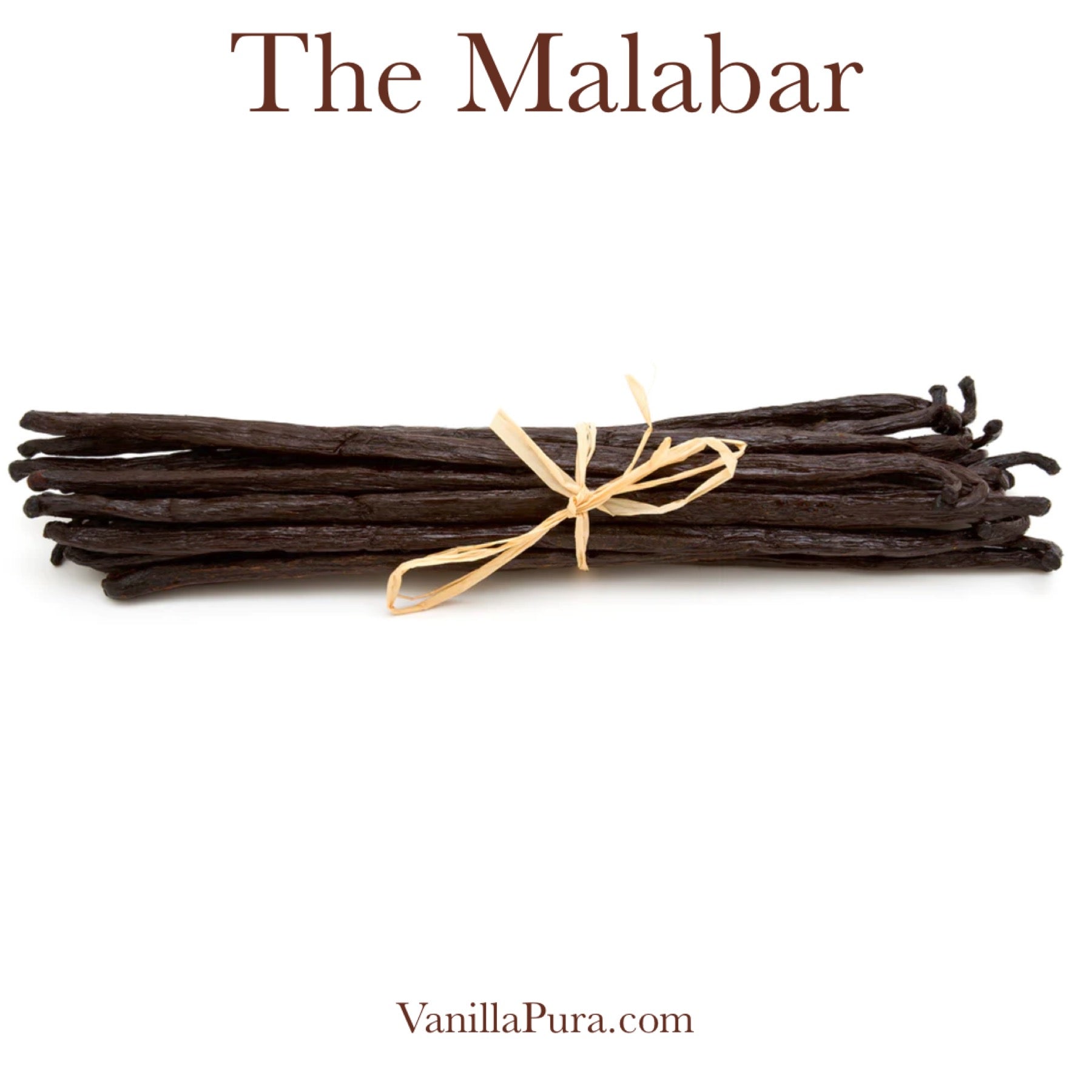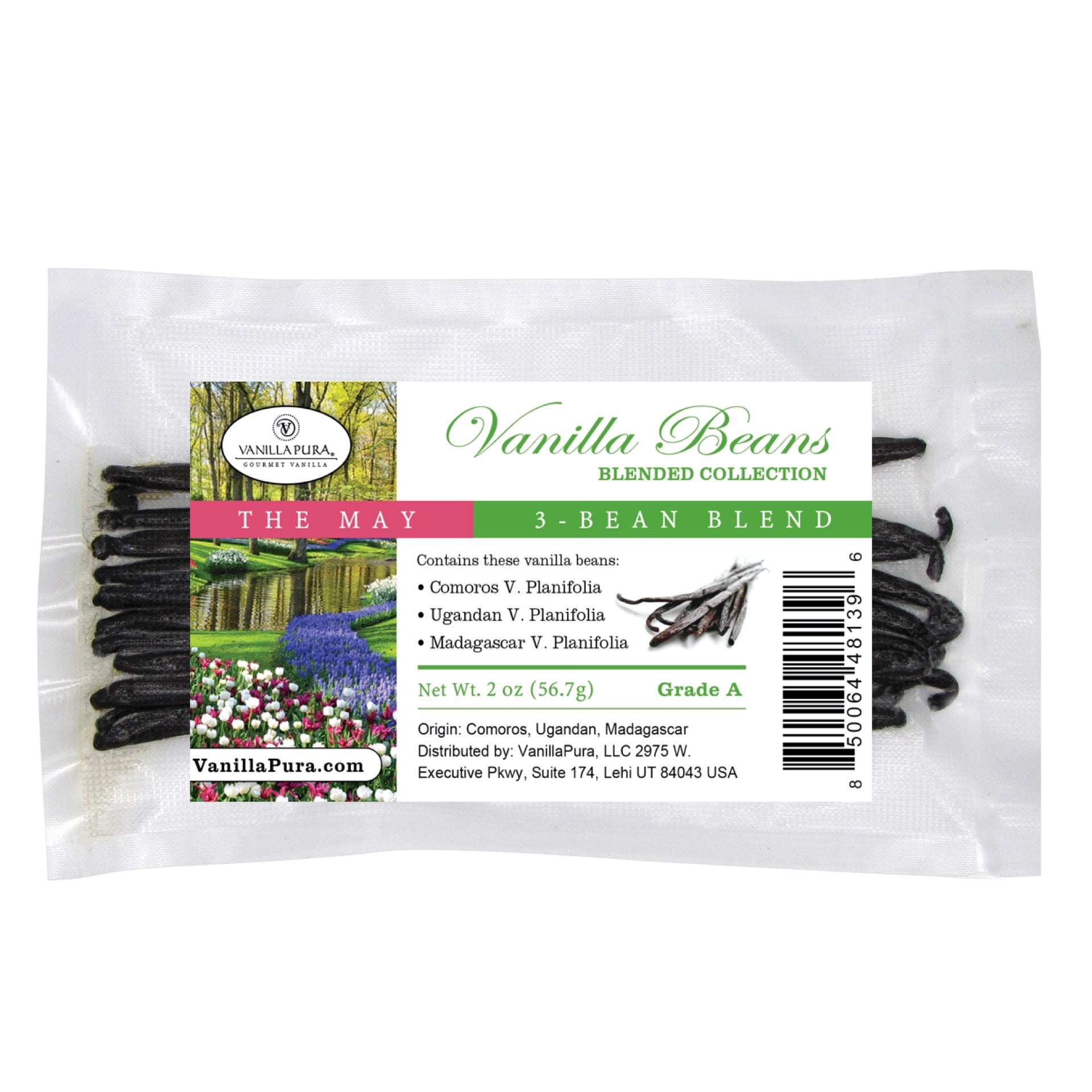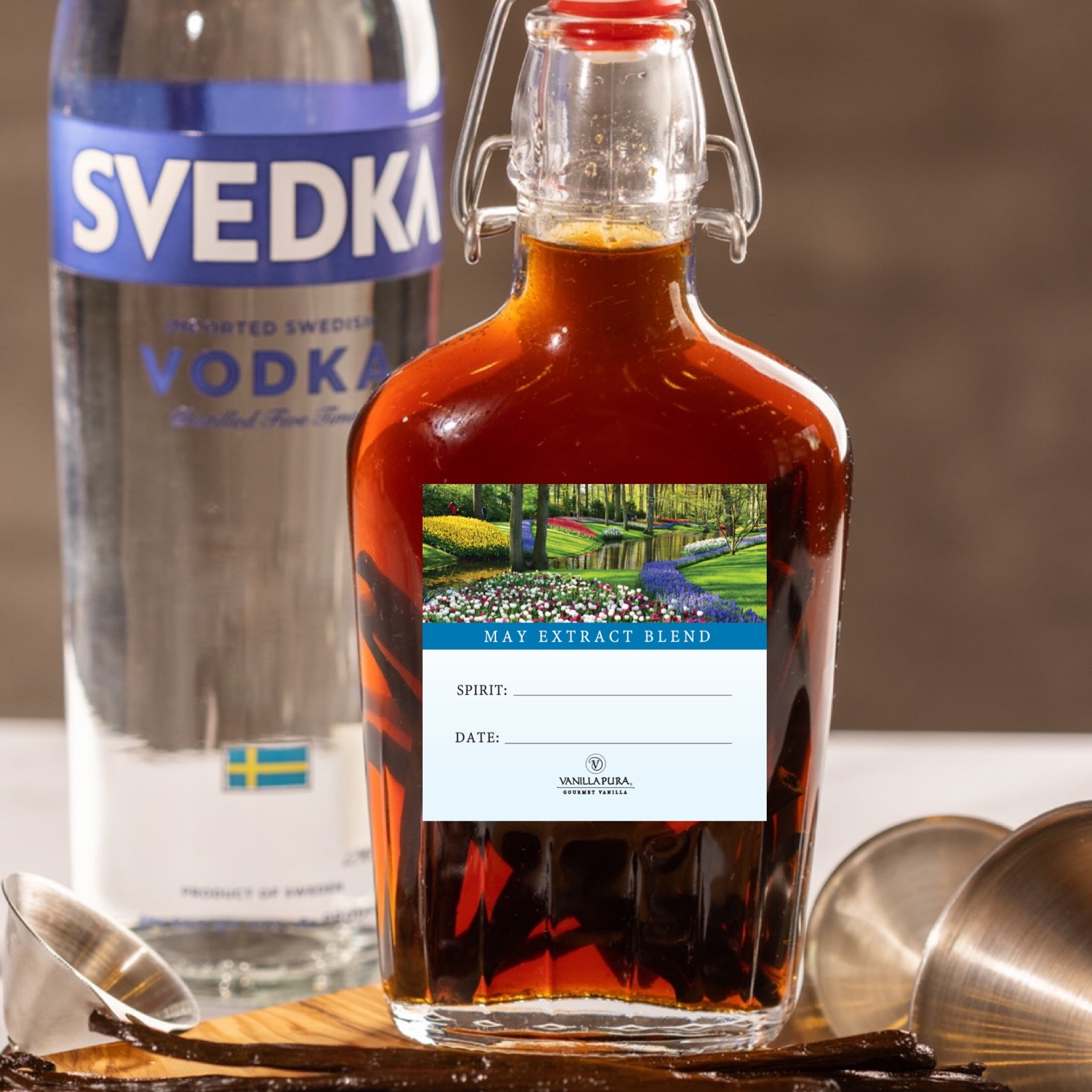Is That Mold on my Vanilla Beans?
Mold and naturally occurring vanillin crystals can sometimes looks similar on vanilla beans. This article is intended to help you correctly identify vanilla bean mold and instruct you how to clean or salvage old vanilla beans that may develop mold, if possible.
A vanilla bean is an organic product and, like any organic product it can go bad. However, given the nature of the tough outer skin of the vanilla bean and the protective, naturally-occurring vanillin oil, it is surprisingly durable.
Mold can occur as a result of temperature fluctuations and/or the inclusion of excess moisture, poor harvesting practices or bacteria growth during the harvesting/drying process. Like any mold, the vanilla-bean mold feeds on oxygen, heat and bacteria as it grows.
It can often be difficult to distinguish mold from naturally occurring imperfections on the bean pod, or damage caused to the bean pod during harvesting. In addition, one bad bean does not necessarily mean that the entire batch is bad, but the entire batch should be inspected further if one bad bean is found.
Of course, if mold is present and if you are concerned about the quality of the bean, the bean can be discarded. At VanillaPura, we will always replace them at no charge if the beans were delivered in the last 30 days and still in their unopened pouch.
If you suspect mold, the first thing you should do is smell your vanilla beans. Mold will smell musty and wet. Visually, the mold will cover much of the vanilla bean and will usually be yellow, green, white or black in color and will have a powdery look.
Here is an image of vanilla beans where white mold has grown substantially and the beans should probably not be used:

Can Vanilla be Saved if Mold is Observed?
In the picture above, we would not recommend trying to save the vanilla beans. However, when mold is present in a very small quantity and just on the ends of the pod, it can often still be used. According to the USDA, some fruits and vegetables can be saved if they are firm with lower moisture content. The moisture content of grade-B vanilla beans is typically less than 25% and grade A is typically not greater than 35%. Moisture is needed for mold to grow so the lower the moisture content, the more likely it is that mold is localized. Based on the examples used in the chart below from the USDA, vanilla beans likely fall into the safe for use category, when following the instructions below:
|
Fruits and vegetables, FIRM (such as cabbage, bell peppers, carrots, etc.) |
Use. Cut off at least 1 inch around and below the mold spot (keep the knife out of the mold itself so it will not cross-contaminate other parts of the produce). | Small mold spots can be cut off FIRM fruits and vegetables with low moisture content. It's difficult for mold to penetrate dense foods. |
|
Fruits and vegetables, SOFT (such as cucumbers, peaches, tomatoes, etc.) |
DISCARD | SOFT fruits and vegetables with high moisture content can be contaminated below the surface. |
Here is the average moisture content of each example used in the chart above:
Safe for use:
- Cabbage: 80%
- Bell peppers: 80%
- Carrots: 86%
Not safe for use:
- Cucumbers: 96%
- Peaches: 88%
- Tomatos: 92%
Given the fact that vanilla beans have a maximum moisture content of less than 40% and are firm, but pliable like a bell pepper or cabbage, if mold is observed on just the tips of the beans, we believe it is safe to cut them as instructed above and still use the pod. Also given the fact most vanilla beans are going into 35%+ alcohol for a year or longer, any existing mold would not grow and likely be killed.
Another tip that you can use to clean your vanilla beans of mold is to re-cure them. This is done by using a paper towel that has been dampened with alcohol, like vodka. Rub off the mold and then put the vanilla beans into a plastic bag with slits cut for ventilation and set the bean in the warm sun for a few hours. This sun will naturally pull the antimicrobial vanillin oil to the surface, just as it does when they are curing the beans in the vanilla farms. You will know when the beans are finished curing when you smell that sweet vanilla scent again.
Vanilla Growth That Looks Like, But is NOT Mold
Vanilla beans that are vanillin rich may show other signs that are "mold-like" but not mold at all, so be cautious when throwing out your beans. You don't want to discard a perfectly-healthy bean! In fact, the presence of these abnormalities often indicates a high quality vanilla bean.
One of these occurrences is a vanillin crystal (or vanilla frost) that can form on the outside of the bean. Usually white with the appearance of a spider web, this crystal forms from the vanillin's response to temperature changes. Here is an image that we took of unusually-high formation of vanillin crystals so you can see in detail what it appears like. These are very healthy vanilla beans with vanilla frost and crystal formations:

Another occurrence that can appear like mold on a vanilla bean is "vanilla butter". This is light in color and typically found at the top or bottom of the bean. It's typically very oily when rubbed between your fingers and will have a neutral or vanilla smell. Vanilla butter presents itself often in the summer months when it's hot and the beans are exposed to heat when being mailed. The oil will rise out of the tips where the beans have been cut.
Here is an image of vanilla butter at the end of several vanilla bean pods:

Here's another image of vanilla butter within the vacuum sealed package on arrival:


Of course, if you are concerned about anything on the tips of the vanilla beans, you can simply cut them off per the USDA instructions above.
Cold temperatures can also create "speckles" on the beans, or in some extreme cases, it can create a white coating (almost like a white dust) on the bean. This may happen during shipping in the winter time. In this case the vanillin oil on the skin of the bean hardens (similar to oil hardening when left out overnight or placed in the fridge) and creates a tiny, off-white speck or a white powdery coat. The specks can be easily wiped off or just left alone. If you look closely, the speckles are often a very light brown and crystal-like. The powdery coat is the most deceiving occurrence. It's usually white and can cover a large portion of the bean. To test whether or not the powdery coat is mold, put the beans near a heat source for 15 mins or so and the powdery coat will disappear. (Mold will not disappear with heat.)
Here is a picture of vanilla beans with speckles. You have to look closely to see them:

There may be other imperfections when you examine your beans closely. There can be damage to the skin of a bean where the beans were tied into bundles by the farmers. Bundling requires the use of twine that can erode the outer skin of the beans on the outside of the bundle, as pictured below. The quality of the bean is still great.

Finally, at-home extract makers may may notice white fatty-matter appearing on their beans after submersing them in alcohol. It can have the initial appearance of mold, but when you look closely you will see that it is actually the fatty vanillin oils being extracted. They will break down over time. This is typically the sign of a vanillin-rich bean that is sure to be a sweet extract.

If you ever question whether it is fat or mold, simply remove the bean from the bottle and rub the fatty matter between your fingers. Oil will be smooth like butter and will break down easily. Mold will be somewhat like a crumb and won't dissolve as vanillin will. Also remember that mold cannot grow on anything submerged in alcohol.
Vanilla bean pod particles may also break down over time, so it isn't uncommon to see specs or "floaties" in your extracts, especially if you sliced or cut your beans before submersing them. This is normal. Some people love the specks, while others choose to pour their extracts through a strainer or coffee filter before use to ensure that it is clear. Either option is great and entirely up to the user.
We inspect every single vanilla bean individually before it is shipped to you. We vacuum seal our vanilla beans to remove the oxygen and mitigate the occurrence of mold growth in transit. We do not rinse our beans in alcohol before shipping to you, because you would be paying for the added alcohol weight and because beans are the very best when their natural, oily surface is left undisturbed.
If you ever have questions about your beans or you are concerned about their appearance, give us a call or send us an email at support@vanillapura.com.
Visit our comprehensive extract-making guide center for more essential extract making tips and ongoing education.
















